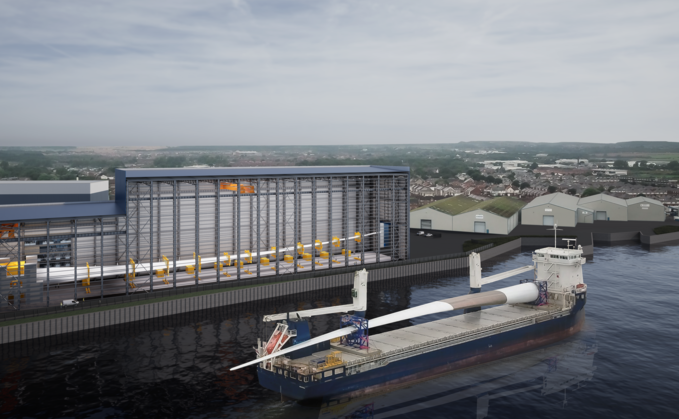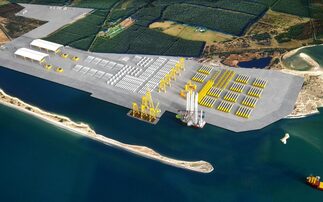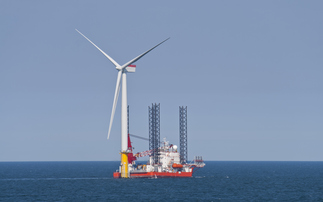A render of the Blyth testing facility | Credit: ORE Catapult
Government investment to expand facility to be able to test larger blades and more powerful turbine drivetrains
The Offshore Renewable Energy (ORE) Catapult has secured nearly £85.6m in capital funding from government innovation agency UK Research and Innovation to upgrade its wind turbine testing facilities in Northumberland.
The funding will enable larger blades and more powerful drive trains to be tested at the Blyth site, in an upgrade that could accelerate the development of larger, more efficient wind turbines.
"This investment in truly world-leading capability will keep the UK at the forefront of offshore wind technology development," said Andrew Jamieson, chief executive of ORE Catapult. "It will enable ORE Catapult to continue to deliver the most advanced research and development infrastructure and expertise to the offshore wind industry, capturing the jobs and economic growth from the transition to a net zero economy".
The capital funding is earmarked for a new facility at the site that would test blades as long as 150 metres, with the potential to accommodate blades as long as 180 metres in the future, according to ORE Catapult.
The investment will also enable the upgrade of the facility's existing testing facilities for turbine generators so that it can test drive powertrains of up to 23MW capacity, with the potential to test 28MW units in the future.
Currently, the Blyth facility can test wind turbine powertrains with up to 15MW capacity and blades of up to 100 metres in length.
ORE Catapult said it expected the upgraded research and development facilities to prevent 2.5 million tonnes of CO2 emissions by accelerating the deployment of turbines by a minimum of eight months.
It expects the expansion of the facility to create 30 new jobs in Blyth and support five PhD students a year.
Science, Research and Innovation Minister Andrew Griffith said the government's investment in the facility would create jobs, grow the economy, and strengthen the UK's energy security.
"Our £86m funding will create highly skilled and highly paid new jobs that grow the north-east and wider UK economies," he said. "It will also bring in investment by marking our country as a leader in technologies of the future as well as a global capital for wind power. At the same time this innovation will strengthen the UK's energy security in an uncertain world and help us pivot towards the cleaner energy that can preserve our planet for generations to come."
The government said the expansion would mean the site would be capable of testing the largest blades currently on the market and those in development that could be deployed in the near-future.
In related news, a group of leading ports from across Scotland have today launched the Scottish Offshore Wind Ports Alliance (SOWPA) in a bid to accelerate the roll out of infrastructure to support the country's burgeoning offshore wind sector.
Iain Sinclair, executive director at Global Energy Group, one of the members of the new group, said: "It is widely recognised that ports have a critical enabling role in the industrialisation and deployment of offshore wind in the UK. Today's announcement demonstrates that ports are motivated to take the initiative, work proactively and diligently together, and align with the whole offshore wind ecosystem, to maximise the localisation of the supply chain requirements.
"SOWPA's collective capability, knowledge and expertise is a world leading value proposition. We have a willingness and appetite to enhance our competitiveness, address supply chain challenges and deliver against Scotland and the UK's offshore wind ambitions."
Want to understand what is going on at the cutting edge of sustainability? Check out BusinessGreen Intelligence - the premier information for professionals focused on the UK's green economy.










